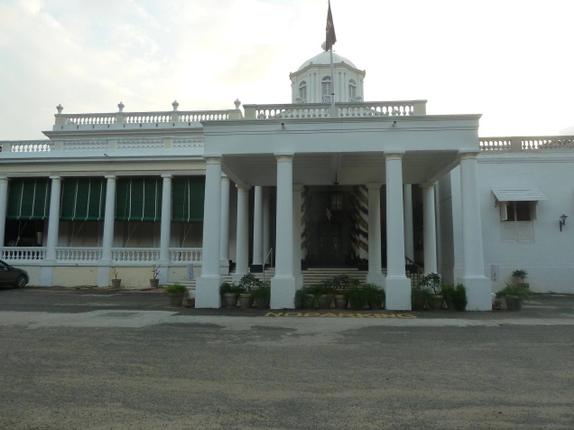
Walking through the grand portals of the Madras Club to relive its history
The mention of Madras Club will evoke pictures of the magnificent Moubray’s cupola after which it is named, its grand columns and chandeliered interiors, excellent cuisine and the sound of music and dances that has wafted across the Adyar River for nearly two centuries. But waiting for my appointment, I wander towards the great banyan tree in front, recalling a story in Col. Love’s history of the Club (1832-1900). Describing the banyan opposite his bedroom a “standing nuisance”, a sleep-deprived resident of the Club wrote in the complaints book that the “infernal tree” was home to half the crows of Madras, and when the fruit ripened, had the other half joining them in chorus. Screeching flying-foxes that let out war-cries and chirping small birds added to the overall racket, he recorded bitterly, and left the premises in haste in spite of the appointment of “an intimidator/crowman” to shoo the birds away.

That is only one of the many vignettes that swirl through the grand portals of the “Ace of Clubs”. The second oldest surviving club in India after Calcutta’s Bengal Club, it has grown in three homes including the present one. The Club met for the first time in 1832 with Chief Justice Sir Robert Comyn in the Chair and facilitated the purchase of a Club House before the opening date of 15/05/1832. Sir Henry Chamier, the Chief Secretary, was its first president. When a swelling membership necessitated larger space, a four-acre property was bought in 1852 and a five-acre one was leased from Col. Patullo in 1898. Thanks to its illustrious presidents and members, by its golden jubilee year, the Club’s stature rose to be considered equal to that of the legendary Melbourne Club, Australia. The Club became famous for the grand balls it hosted in honour of British royalty.
After it moved into its second home at Branson Bagh opposite Church Park School, its shaky financial position necessitated increase in subscription, and to reduce the burden of members who were also members of the Adyar Club (1890), after a seven-year discussion, Madras Club merged with Adyar Club in 1963 and stands surrounded by Mowbrays Garden, comprising 12.7 acres. The Cupola, built by George Mowbrays, a businessman-turned-Sheriff/Mayor of Madras, dates before 1792. It is now a business-cum-family club with a parking area for 150 cars, 14 residential rooms, the oldest private library in the city, two restaurants, a bakery, five tennis courts, swimming pool (being cleaned by a robot now), gym, a jogging track — all located on the Adyar River.

“You’ll find this club culture in British colonies alone,” says a senior member of the Club, as we sip tea at the popular poolside café. “All the prominent clubs in Chennai are modelled on British clubs. British officers, Indian officers and clerks followed hierarchy strictly in office, but socialised informally at their club.” Catering is very formal in the main dining area where there is a dress-code (“jacket is mandatory”), but for a spot of informality along with grilled sandwiches, walk into the poolside hall.
Sharing stories of his 20-year association with the Club, he asks, “Did you know the “mulligatawny soup” had its origin here?” referring to the anglicised version of milagu thanni. “We met Prince Charles here,” says his wife. “And later in the evening he saw me at the Rajaji Hall and remarked: You are wearing a different sari!”
We walk up the original steps to the grand vestibule and after a brief look at the crest featuring St. George and the motto Concordia Vires, step into the lounge to admire the octagon (the underside of the cupola) with stars painted on it. We walk through the ancient bar, the century-old ballroom now decorated for Christmas. Spread everywhere are pieces of graceful furniture. The Club is a place to relax, recuperate and meet people, says the senior member. Name any corporate honcho/captain of industry/ diplomat; you’ll bump into him/her at the playground, cafe or bar. “The Madras Club has a village atmosphere that has stood the test of time. People take refuge here from the chaos outside. It is the tranquillity that members seek.” The Club is still an exclusive organisation, but the informality outside has found inevitable reflection in the running of the grand old place. It has also acquired a health aspect to its social ambience, another nod to the changing clime.
Historian S. Muthiah concludes in his book on the Club with these words: “And that’s what makes the Club, not its bricks and mortar and trees, but a membership that recognises that it is a privilege to belong to the institution… and is committed to keeping it ‘The Ace of Clubs’.”
source: http://www.thehindu.com / The Hindu / Home> Features> Friday Review> History & Culture / by Geeta Padmanabhan / December 23rd, 2014